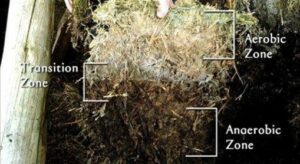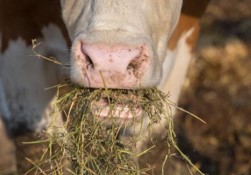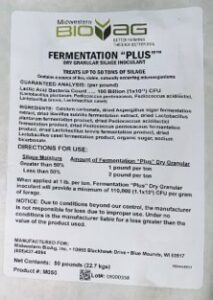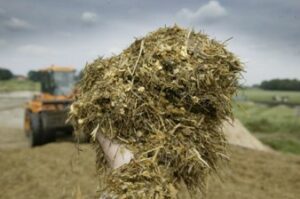Fermenting forages is very beneficial to cattle nutrition and production-wise. When forage is fermented it causes a breakdown of forage material, making it easier for animals to digest. Since the fermented forage is easier to digest, the bodies can digest forage quicker and releases more energy for the animal. The cattle can utilize the feed more efficiently and this will result in less waste in the undigested material that they excrete.


- Nutritious and delicious: fermentation converts grass sugars into acids (volatile fatty acids). These acids preserve the nutritional value of the silage by preventing spoilage micro-organisms from utilizing the
- Silage trumps hay: silage preserves more nutrients from the original Nutritional losses are smaller when you convert pasture to silage as opposed to hay.
- Cost-effective: As a home-grown food source, silage is a cost-effective and sustainable way to provide your herd health with many of the nutrients and calories they need to stay healthy and
- Bunk life is increased: minimize exposure of fermented feeds to oxygen will hinder the growth of spoilage yeasts and molds will increase bunk life and preserve the quality of the silage
- High net energy: The net energy of silage is highly variable. Nutritional content depends on the quality of pasture as well as the fermentation process and However, research shows that in dry matter grass silage provides 9-12 MJ/kg.
- Boost milk yields: Energy from nutritional silage aids in body condition and the energy necessary for each cow to reach its milk production potential.

Fermentation “Plus”™ Silage Inoculant contains live- and naturally-occurring microorganisms to ferment most plant materials. It can help you produce superior silage with low pH and high lactic acid. Fermentation “Plus” also helps prevent silage spoilage by inhibiting the growth of harmful organisms.
Benefits include:
-
-
-
-
-
-
- Reduced heat
- Reduced harvest loss
- Improves feed palatability
- Increases feed digestibility and value
-
-
-
-
-
This product is available in both dry-granular and water-soluble forms. There is a guaranteed analysis of a lactic acid bacteria count of 100 billion (1×1011) CFU per pound for dry-granular and 90.8 billion CFUs per gram for water-soluble forms.


